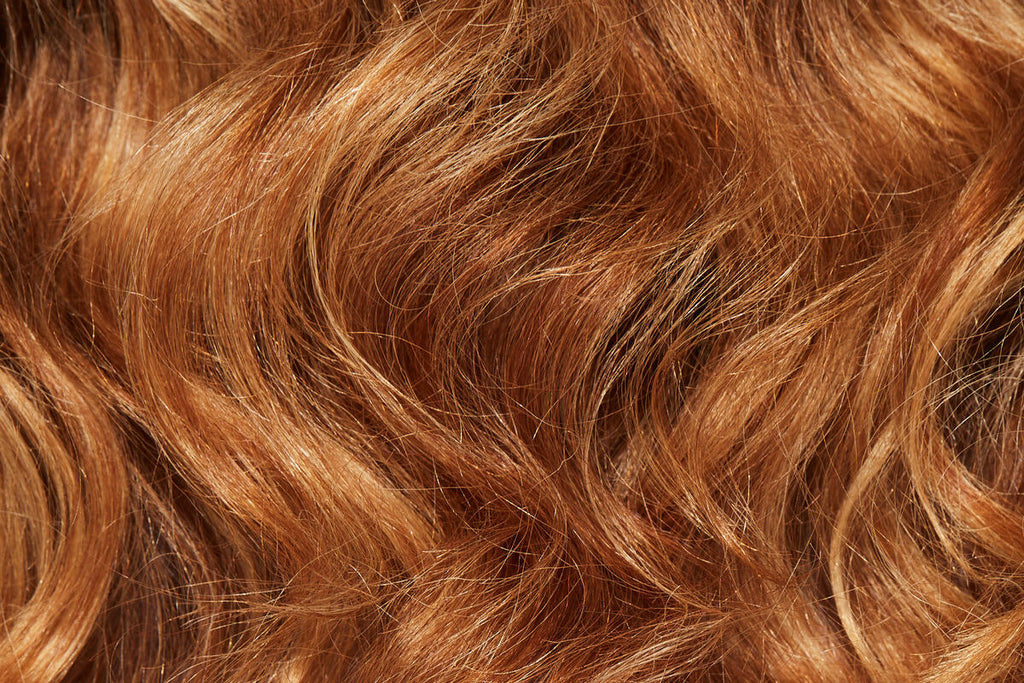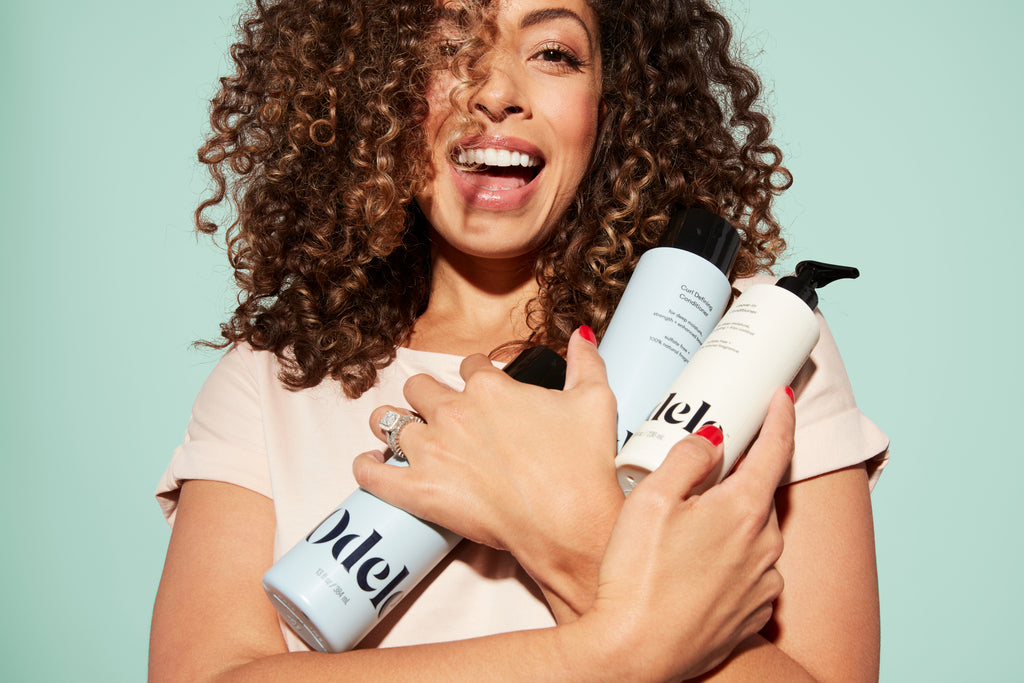If you struggle with styling your hair or finding the right products, tuning in to your hair type can help. It goes beyond just knowing your hair’s texture or curl pattern—a bunch of other puzzle pieces play into the picture. Once you know your hair type, it becomes a lot easier to pick products, make styling decisions and get along with your hair.
Here’s a quick guide to finding your hair type so you can build the haircare routine that’s best for you.
How to find your hair type
The four main factors to consider when determining your hair type are curl pattern, texture, porosity and scalp moisture. Let’s break down each.
1. Curl pattern
Your curl pattern is the natural shape of your follicles: straight, wavy, curly or coily. This one’s usually obvious, but not always! It’s not uncommon for your styling and care habits to have you thinking your strands are one shape when they’re really another (curly and wavy hair types, for example, often get mixed up).

To reveal your hair's natural shape:
- Cleanse your hair thoroughly (call on our Clarifying Shampoo if you need). Follow up with conditioner if it’s part of your routine.
- Allow your hair to air dry without any leave-in or styling products. This will help you accurately assess its natural shape.
- Part your hair into four sections so you can easily examine each area of your head.
- Study the shape and pattern of your strands, getting up close and personal with each section. You might notice a couple of different textures on your head, but there’s usually one that’s most prominent.
-
Compare your hair to the chart above and see where it matches up. That’s your natural pattern!
2. Hair texture (aka thickness)
Hair texture refers to the diameter, or thickness, of your individual strands. It’s helpful to know so you can choose products that will hydrate—but not flatten or weigh down—your hair. It’s also a good indicator of how tough or fragile your tresses are.
It’s easy to figure out your hair texture—just rub a single strand of hair between your fingers. If you can barely feel it, you have fine hair. If you can kind of feel it, you have medium hair. If you can really feel it, you have thick or coarse hair.
You can also get an idea of your hair’s texture by how well it holds a style, especially for straight and wavy types. If your braids loosen up quickly or your hair has trouble holding a curl, it’s probably on the finer side.

3. Hair porosity
Porosity refers to how well your hair can absorb and hold moisture. It’s determined by how open, or porous, your hair’s cuticle is. Porosity can help you understand if (and why) you’re prone to dryness or oiliness and how much moisture your hair needs.
Porosity types are categorized as high, medium or low. High porosity hair has a more open cuticle layer, making it easy for moisture to get in but hard for it to stay in. It tends to dry out quickly, feel brittle and be prone to breakage, so it needs intense moisture and gentle care.
Low porosity hair has a more tightly bound cuticle layer, making it tricky for moisture to get in at all. Products tend to sit on top of the hair instead of being absorbed in, which can make it feel greasy. Using clarifying shampoo can help with buildup, as can choosing lightweight, water-based products that won’t weigh down your mane.
Medium porosity hair absorbs and retains moisture well, so this type has a healthy moisture balance.

Porosity is mainly genetic, but how you style and treat your hair can also factor in over time. Things that damage your hair (like excess heat, relaxers or color treatments) can lead to high porosity, so the more processed your hair is, the more love (aka moisture) it will need.
Not sure where you fall on the porosity scale? Try the float test: Drop a strand of clean, dry hair into a clear glass of water. If it floats to the top for a while and then sinks to the bottom, it has low porosity. If it floats near the middle it’s medium, and if it sinks to the bottom it’s high.
4. Scalp moisture
Last but not least, your scalp and roots can tell you a lot about how often to wash your hair and what products will get along with it best.
Do your roots look greasy within a day or two of shampooing? You likely have an oily scalp. You may want to shampoo more frequently or consider adding a scalp exfoliator to your wash routine to bust buildup. It can also help to look for volume-boosting, oil-controlling products to keep your strands from falling flat.
Another thing to look out for is dandruff, a fungal condition that causes oily flakes and might require you to use an over-the-counter shampoo or switch up other haircare habits.
If your roots don’t get oily until a week or more after wash day, or you notice dry, flaky scalp skin, you’re probably dealing with a dry scalp. Consider lightening up your shampoo schedule or using a gentler, more moisturizing shampoo.
Can your hair type change?
Yes. Just like your skin type, your hair type can change due to age, hormones, health and haircare habits. And your scalp can also change with the seasons—you might deal with oiliness when it’s hot and humid out but feel dry and flaky once winter rolls around.
The important thing is to pay attention and embrace the twists and turns. You may need to switch up your wash schedule or care products from time to time to adapt to changes.
Our quiz makes it easy to find the right product matches—just tell us a few things about your hair and scalp and we’ll set you up with your ideal routine.











